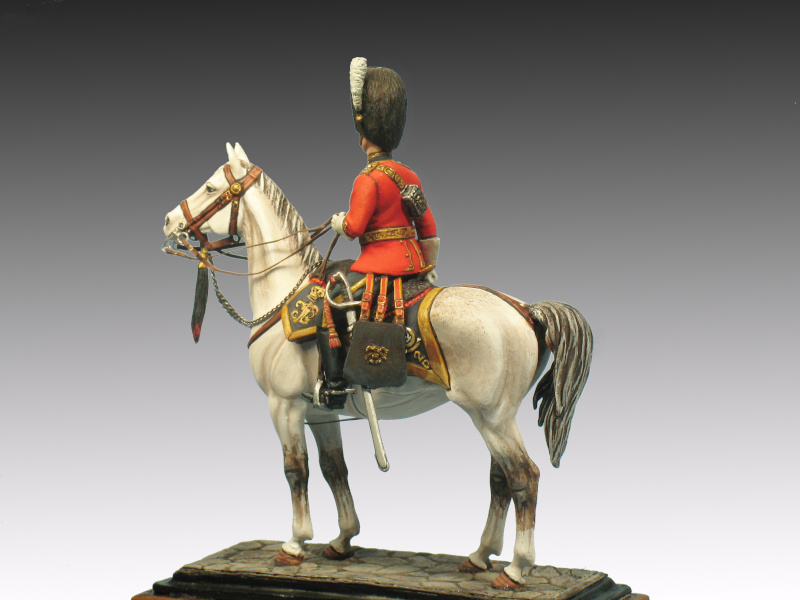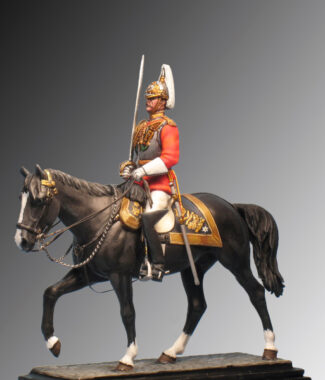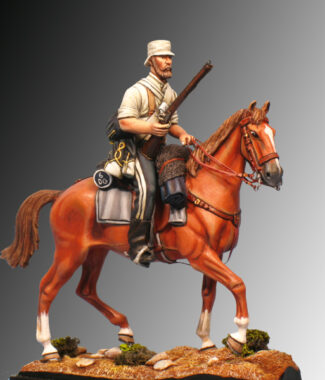You must be logged in to post a review.
2nd. Dragoons Scots Greys – 1887
€68.00
Figure to assemble and paint
Ref.: 6 – CRV
Weight: 240 grs.
Material: White Metal
Number of Pieces: 14
Historical Review:
Raised in 1681 as – The Royal Regiment of Scots Dragoons
1707 – Royal North British Dragoons
1751 – The 2nd or Royal North British Dragoons
1866 – 2nd Royal North British Dragoons (Scots Greys)
1877 – The 2nd Dragoons (Royal Scots Greys)
1921 – Royal Scots Greys (2nd Dragoons)
1971 – Royal Scots Dragoon Guards (Carabiniers and Greys)
The regiment was formed as The Royal Regiment of Scots Dragoons in 1681 from a number of existing troops of cavalry. Its first action was the suppression of the Earl of Argyll’s rising, launched in 1685 in support of the Duke of Monmouth’s revolt. Following the Glorious Revolution (1688), the regiment went over to King William III, fighting for him against the Jacobites in Scotland. It was ranked as the 4th Dragoons in 1692.
The following year, the entire regiment attended a royal inspection in London mounted on ‘greys’ (horses with white or dappled-white hair). This gained it the nickname ‘Scots Grey Dragoons’. However, this only became part of its official title in 1877, when it was renamed the 2nd Dragoons (Royal Scots Greys). Following its royal inspection, the regiment fought in Flanders during the Nine Years War (1688-97).
The regiment was very active during the 18th century, taking part in the War of the Spanish Succession (1701-1714), the War of the Austrian Succession (1740-1748), the Seven Years’ War (1756-1763) and the Dutch Campaign (1793-1795) at the beginning of the French Revolutionary Wars (1793-1802).
It did not fight again until the Battle of Waterloo (1815). This was its only Napoleonic battle honour, at which 201 of its men and 228 of its horses were killed attacking a French infantry brigade. In this attack, Sergeant Charles Ewart captured the French 45th Line Infantry Regiment’s eagle. This later became part of the unit’s cap badge.
A long period of home service followed until the Crimean War (1854-56). There, the regiment won two Victoria Crosses charging uphill against 3,000 Russian cavalry at Balaklava (1854).
On returning home, it saw no further active service until the Boer War (1899-1902) in 1899. During this campaign, it camouflaged its white horses with khaki dye. It took part in the Relief of Kimberley, fighting at Paardeberg (1900).
The regiment was active in both World Wars: (1914-1918) and (1939-1945). During the inter-war period, it served in the country. But it was also deployed in India in the 1920s and in Palestine in the 1930s, where it helped suppress the Arab Revolt (1936-1939).
From 1945 until 1962, the regiment alternated between service in Germany with the British Army of the Rhine and at home stations, aside from a brief deployment in Libya during 1952. In 1962-63, it deployed to Aden during the Emergency (1963-67). But, later the following year, it returned to Germany until 1969 when it transferred to Scotland.
It was still in Scotland in 1971, when it was amalgamated with the 3rd Carabiniers (Prince of Wales’s Dragoon Guards) at Edinburgh to form The Royal Scots Dragoon Guards (Carabiniers and Greys).
The figure, set during a period spent in England (1887), shows an officer in review order uniform. Characteristic of the regiment was the tall bearskin cap. As had been customary since the late 17th century, he rides a excellent grey horse.








Reviews
There are no reviews yet.